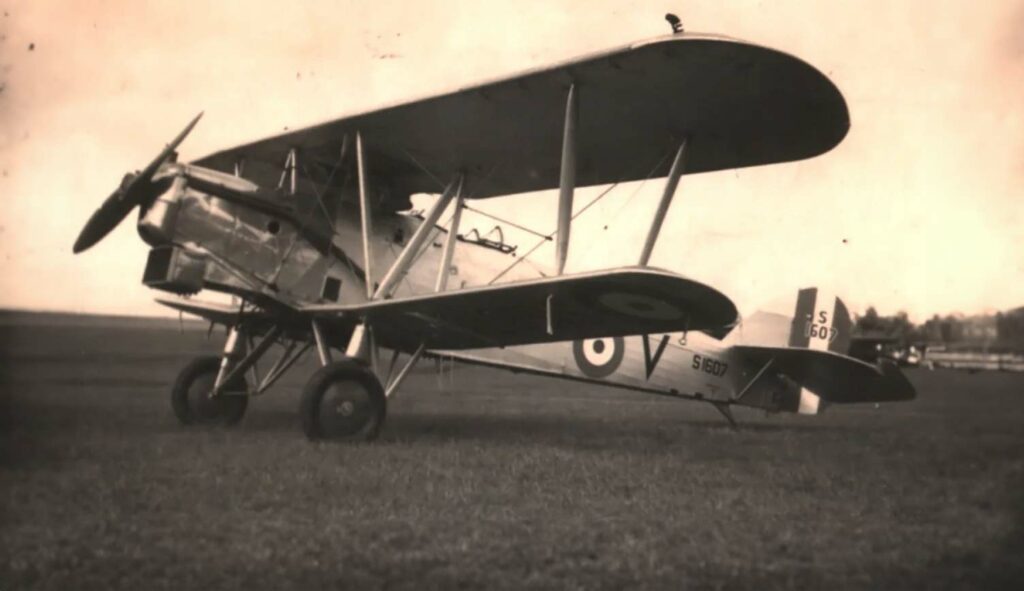The Hawker Horsley: A 1920s British biplane, serving as a torpedo bomber and long-range reconnaissance craft for the RAF. The Hawker Horsley holds historical significance as one of the last wood-constructed British biplanes, designed primarily for the Royal Air Force as a torpedo bomber. Its versatility also allowed it to serve in various roles, including long-range reconnaissance and training.
The period following World War I was characterized by rapid advancements in aviation technology, with military airpower becoming a pivotal component of national defense. The Hawker Horsley emerged during this transformative time, epitomizing the evolution of aircraft from the wood-and-fabric construction of the Great War to the all-metal monoplanes that would dominate the skies in World War II.
History of the Development of the Hawker Horsley:
Developed in the mid-1920s, the Hawker Horsley was a result of the RAF’s need for a modern torpedo bomber that could also fulfill the roles of day bomber and reconnaissance aircraft. Designed by Sydney Camm, who later gained fame for the Hawker Hurricane, the Horsley was produced by Hawker Aircraft Limited, a company renowned for its commitment to advancing British aviation.
The development program was launched to replace aging World War I-era aircraft with a more capable and versatile platform. The prototype, designated Horsley I, took to the skies for the first time on March 7, 1925. The aircraft did not receive a NATO nickname, as it predated the establishment of NATO by more than two decades.
The Hawker Horsley was built in an era when Britain was consolidating its air power, focusing on maintaining a strategic edge. The Royal Air Force needed an aircraft that could provide a credible deterrent and reconnaissance capability over the vast expanse of the British Empire and its maritime approaches.
Design of the Hawker Horsley:
The Hawker Horsley was designed as a two-seat biplane with a mixed construction of wood and metal. Its fuselage was made of wood, with a fabric covering, while the wings incorporated metal spars and wood ribs, also covered with fabric. It featured a fixed undercarriage and was powered by a single Rolls-Royce Condor IIIA engine, a liquid-cooled V12 capable of producing 650 horsepower (485 kW).
The aircraft had a wingspan of 56 feet 7 inches (17.25 meters) and a length of 36 feet 7 inches (11.15 meters). The Horsley could carry a 1,800-pound (816 kilograms) torpedo or an equivalent weight in bombs. A key advantage of the design was its robustness and ability to operate from rough airfields. However, it suffered from the limitations of a biplane design, such as lower speeds and less maneuverability compared to emerging monoplane designs.

Performance of the Hawker Horsley:
The Horsley’s Rolls-Royce Condor engine enabled a maximum speed of 123 mph (198 km/h), with a cruising speed of approximately 106 mph (170 km/h). It had a service ceiling of 19,500 feet (5,944 meters) and a range of around 600 miles (966 kilometers). While not the fastest or the most agile, its range and payload capacity were impressive for the time.
Compared to contemporaries like the American Martin MTB or the Italian Savoia-Marchetti S.59, the Horsley was not necessarily superior in performance but offered a balance of range, payload, and operational flexibility that suited the RAF’s needs.
Military Use and Combat of the Hawker Horsley:
The Hawker Horsley served primarily with the RAF as a torpedo bomber and reconnaissance aircraft. It was armed with a .303 in (7.7 mm) Vickers machine gun for defense and could carry either a torpedo or bombs for offensive operations. The aircraft was not involved in any major conflicts as it served during a relatively peaceful period of interwar years.
Its primary role was maritime patrol, anti-submarine warfare, and fleet reconnaissance, contributing to the RAF’s understanding and development of airpower in naval operations. The Horsley was not widely exported, serving primarily within the British military. It was eventually phased out and replaced by more modern aircraft like the Fairey Swordfish.
The Hawker Horsley represents an integral chapter in the RAF’s interwar period, bridging the gap between early biplane designs and the all-metal monoplanes that would follow. While it didn’t see combat, its contribution to military aviation, particularly in torpedo bombing and reconnaissance, was significant, providing valuable lessons for future aircraft design and military doctrine. The Horsley’s legacy is etched in the annals of British aviation history as a symbol of transitional design and multi-role adaptability.
Back to the Bombers section.